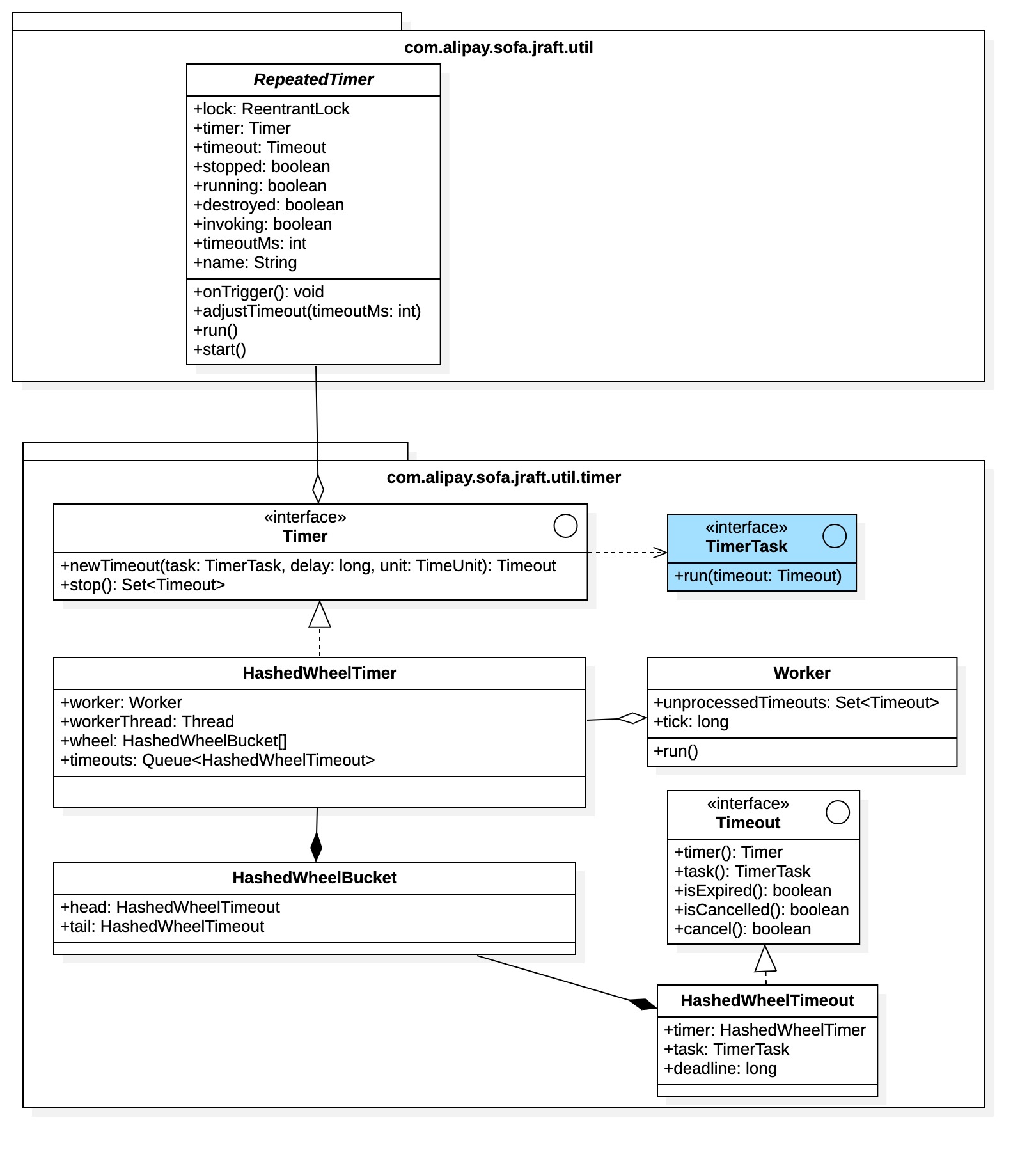(1). 概述
这一篇主要剖析:RepeatedTimer,因为,Node的源码里用到了它,我们知道, RAFT启动时,会产生一个随机延迟数进行选举,而这一步是需要构建一个定时任务来着的,上一篇,我们粗略的剖析了一下:HashedWheelTimer.
(2). RepeatedTimer UML图

(3). RepeatedTimer初始化
// ************************************************************************
// 1. 注意哈,这个类是一个抽象类
// ************************************************************************
public abstract class RepeatedTimer implements Describer {
public static final Logger LOG = LoggerFactory.getLogger(RepeatedTimer.class);
private final Lock lock = new ReentrantLock();
// ***************************************************************************************
// 2. 底层实是Hold住了一个定时任务管理器来着的,这个Timer前面章节有分析过了的.
// ***************************************************************************************
private final Timer timer;
private Timeout timeout;
private boolean stopped;
private volatile boolean running;
private volatile boolean destroyed;
private volatile boolean invoking;
private volatile int timeoutMs;
private final String name;
public int getTimeoutMs() {
return this.timeoutMs;
}
public RepeatedTimer(final String name, final int timeoutMs) {
// ***************************************************************************************
// 3. 为timer进行赋值.
// ***************************************************************************************
this(name, timeoutMs, new HashedWheelTimer(new NamedThreadFactory(name, true), 1, TimeUnit.MILLISECONDS, 2048));
}// end 构造器
public RepeatedTimer(final String name, final int timeoutMs, final Timer timer) {
super();
this.name = name;
this.timeoutMs = timeoutMs;
this.stopped = true;
this.timer = Requires.requireNonNull(timer, "timer");
} // end 构造器
}
(4). RepeatedTimer.start
public void start() {
this.lock.lock();
try {
if (this.destroyed) {
return;
}
if (!this.stopped) {
return;
}
this.stopped = false;
if (this.running) {
return;
}
this.running = true;
// ********************************************************************
// 调度
// ********************************************************************
schedule();
} finally {
this.lock.unlock();
}
}
(5). RepeatedTimer.run
public void run() {
this.invoking = true;
try {
// ***********************************************************
// 1. onTrigger方法,需要业务自己去实现,这是个抽象方法
// ***********************************************************
onTrigger();
} catch (final Throwable t) {
LOG.error("Run timer failed.", t);
}
boolean invokeDestroyed = false;
this.lock.lock();
try {
this.invoking = false;
if (this.stopped) {
this.running = false;
invokeDestroyed = this.destroyed;
} else {
this.timeout = null;
// ***********************************************************
// 2. 调度
// ***********************************************************
schedule();
}
} finally {
this.lock.unlock();
}
if (invokeDestroyed) {
onDestroy();
}
} // end run
(6). RepeatedTimer.schedule
private void schedule() {
// 1. 先停止已经在运行的timeout
if (this.timeout != null) {
this.timeout.cancel();
}
// 2. 创建:TimerTask
final TimerTask timerTask = timeout -> {
try {
RepeatedTimer.this.run();
} catch (final Throwable t) {
LOG.error("Run timer task failed, taskName={}.", RepeatedTimer.this.name, t);
}
};
// 3. 创建定时任务,并启动
this.timeout = this.timer.newTimeout(timerTask, adjustTimeout(this.timeoutMs), TimeUnit.MILLISECONDS);
}
(7). 总结
RepeatedTimer仅仅是在HashedWheelTimer的基础上进行了封装,留出几个钩子函数给业务使用.
